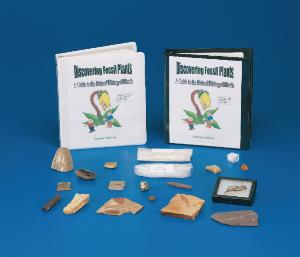Endangered species facts worth saving; Plus a free student handout from AccessScience
Students can explore wildlife conservation, why it's important, and methods used to address biodiversity loss.
Fill form to unlock content
Error - something went wrong!
Get Your Free Article with Follow-up Questions for Students
You're all set!
EnjoyAccess to this content is available to Ward's World readers for free from McGraw Hill's AccessScience, an award-winning, digital STEM resource containing exclusive articles written by expert scientists and engineers; biographies of well-known scientific figures; science news, videos, and animations; and much, much more.
Instructors can use AccessScience to guide students on their research project journeys, to help students understand scientific concepts, to support distance learning efforts, in flipped classroom approaches, and in countless other ways.
Ward’s World and AccessScience have partnered to offer educators a no-obligation, free trial subscription to AccessScience. Request your free trial today to discover how valuable AccessScience can be for you and your students! Get your free trial now.
Middle School/High School
When a species is categorized as endangered, its numbers are so small that they are at risk of extinction. At least 900 species have the unfortunate distinction of being casualties of extinction over the past five centuries.
Your lesson plans on endangered species can help students appreciate how plants, fungi, and animals maintain the health of our ecosystem. They'll learn that when a species becomes endangered, it's a sign that an ecosystem is out of balance. And the consequences to other species, including humans, can be severe. For example, beaver populations also decreased significantly when grey wolves were hunted to near-extinction in Yellowstone National Park. Why? Because the wolves hunted elk. Elk share the same plant diet as beavers. With fewer wolves to keep the elk population in check, the beavers' food supply was depleted. It's also disturbing to consider the domino effect on our ecosystem if the bee population, the world's most prolific pollinator, continues to decline. The impact on the human food chain and animals that depend on bee-pollinated plants for survival is mind-boggling.
What is the endangered species list?
The World Wildlife Fund (WWF), International Union for Conservation of Nature (IUCN), TRAFFIC, and other organizations aim to conserve the natural world and reduce the most pressing threats to the diversity of life on Earth. These organizations monitor the conservation status of plant and animal life and help alert us when any become vulnerable or in danger of extinction. The IUCN Red List of Threatened Species is the best-known worldwide conservation status listing and ranking system. Currently, the WWF indicates the following animals among the critically endangered:
Animals back from the brink
There are some bright spots thanks to the efforts of various groups of scientists and activists. Here are three examples:
Giant Panda
In July 2021, Chinese conservation authorities announced that giant pandas are no longer endangered, with more than 1,800 living in the wild. Conservationists now classify Giant Pandas as vulnerable species (population has declined at least 50%, and the cause of the decline is known).
Arabian Oryx
The antelope species know as the 'Arabian Unicorn' was thought extinct due to poachers. But the Operation Oryx activist team started to capture the last few Oryx to breed them in captivity, then released them back into the wild in 1982. Today the species is categorized as 'vulnerable' on the endangered species list, with over 1,220 in the wild and about 7,000 in semi-captivity.
Southern White Rhinoceros
Although sadly, there are only two Northern White Rhinos left globally, the Southern White Rhino is thriving. The Southern White Rhino is the second-largest land mammal on earth. These beasts are found in protected areas and reserves in South Africa, Namibia, Zimbabwe, and Kenya. In the late 19th century, people thought they were extinct. However, after a small number were found in 1895 in South Africa, conservation efforts began. Today there are more than 19,000 Southern White Rhinos.
Also, see the recommended product below for the Wild Axolotl. This amphibian (also known as a Mexican Walking Fish) is low-maintenance and super-cute. All axolotls in the United States are laboratory-bred but originated from Lake Xochimilco, Mexico—their only natural habitat, where they're critically endangered.
Download McGraw Hill's AccessScience article, Endangered Species, to help your students understand wildlife conservation and the future of the natural world. Use this comprehensive article to help explain key concepts in wildlife conservation, why they are essential, and methods used to address biodiversity loss.
The free download also includes assessment questions and answers you can use to test student understanding. Download the teacher key here.
Recommended Products:
[StartProductBlock]

Ward's® Wild Axolotl Habitat Sets
Set contains one wild-type axolotl, a package of blackworms for feeding, either Elodea densa or Egeria najas, and an aquatic habitat.
[EndProductBlock]
[StartProductBlock]

Discovering Fossils and Extinction Kits
Address the possible causes of mass extinction by examining coral reefs, algae, paleosols, rocks, flora, and fauna of the period..
[EndProductBlock]
[StartProductBlock]
The Sixth Extinction: The Human Role DVD
This alarming program assesses the extent to which Homo sapiens is provoking the planet's sixth extinction.
[EndProductBlock]
